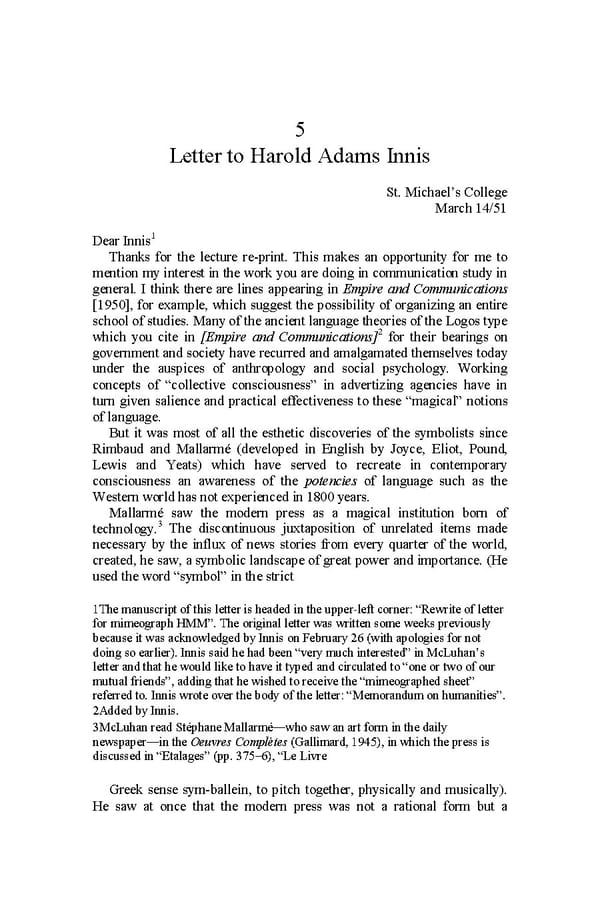5 Letter to Harold Adams Innis St. Michael’s College March 14/51 1 Dear Innis Thanks for the lecture re-print. This makes an opportunity for me to mention my interest in the work you are doing in communication study in general. I think there are lines appearing in Empire and Communications [1950], for example, which suggest the possibility of organizing an entire school of studies. Many of the ancient language theories of the Logos type which you cite in [Empire and Communications]2 for their bearings on government and society have recurred and amalgamated themselves today under the auspices of anthropology and social psychology. Working concepts of “collective consciousness” in advertizing agencies have in turn given salience and practical effectiveness to these “magical” notions of language. But it was most of all the esthetic discoveries of the symbolists since Rimbaud and Mallarmé (developed in English by Joyce, Eliot, Pound, Lewis and Yeats) which have served to recreate in contemporary consciousness an awareness of the potencies of language such as the Western world has not experienced in 1800 years. Mallarmé saw the modern press as a magical institution born of 3 The discontinuous juxtaposition of unrelated items made technology. necessary by the influx of news stories from every quarter of the world, created, he saw, a symbolic landscape of great power and importance. (He used the word “symbol” in the strict 1The manuscript of this letter is headed in the upper-left corner: “Rewrite of letter for mimeograph HMM”. The original letter was written some weeks previously because it was acknowledged by Innis on February 26 (with apologies for not doing so earlier). Innis said he had been “very much interested” in McLuhan’s letter and that he would like to have it typed and circulated to “one or two of our mutual friends”, adding that he wished to receive the “mimeographed sheet” referred to. Innis wrote over the body of the letter: “Memorandum on humanities”. 2Added by Innis. 3McLuhan read Stéphane Mallarmé—who saw an art form in the daily newspaper—in the Oeuvres Complètes (Gallimard, 1945), in which the press is discussed in “Etalages” (pp. 375–6), “Le Livre Greek sense sym-ballein, to pitch together, physically and musically). He saw at once that the modern press was not a rational form but a
 Essential McLuhan Page 72 Page 74
Essential McLuhan Page 72 Page 74